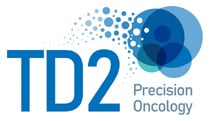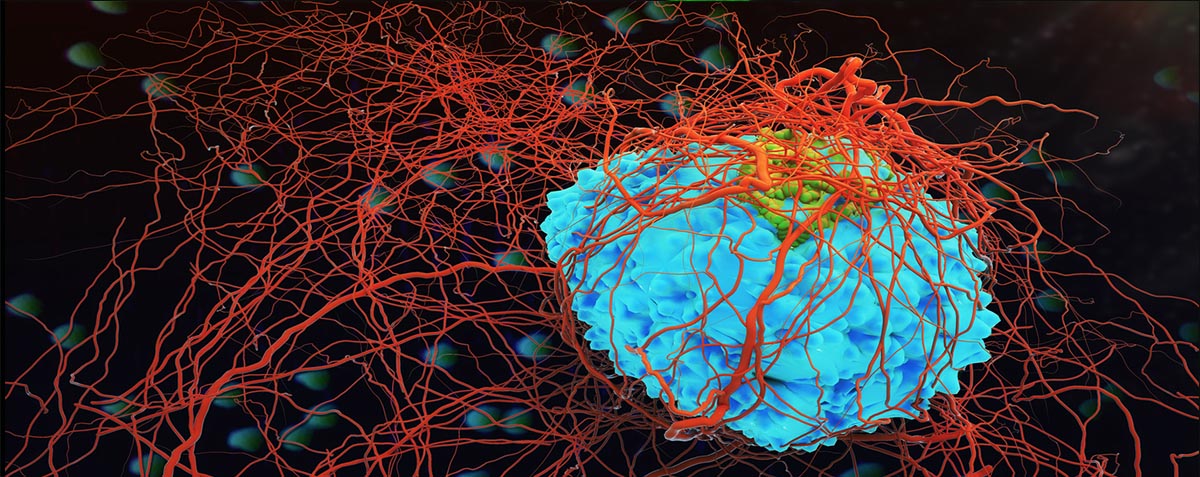By Hillary Reif, Administrative Assistant/Research Associate I and Christine Samuelson, Administrative Assistant
Flow Cytometry is considered a high complexity analysis technique that is routinely used during the drug development process to analyze tumor specimens. As a result, the need for a laboratory with highly trained individuals is essential. Pharmaceutical and biotech companies should have the flexibility to choose the most qualified laboratory to perform their testing, even if it means outsourcing to a contract research organization. However, due to reservations about shipping stability negatively affecting a specimen’s viability and yield, researchers are often hesitant to use an offsite laboratory; even though, a specialty laboratory may be the best choice for providing more detailed and comprehensive flow cytometry results for the specific analysis method. A study was conducted at TD2 to determine if shipping tumor samples to an outside laboratory had any adverse effects on the viability or staining pattern of the specimen.
Tumor models are frequently used in research to study the development and progression of cancer, and test the effectiveness, toxicity, and potential side effects of new treatment options. A total of 13 tumor types were used in this study, varying from breast cancer to renal cell carcinoma, and three of these tumors – MBT-2, B16/F10, and CT-26 – will be the focus of this discussion.

Figure 1: Cells in culture at 100X under phase-contrast A. CT-26 Cells[1] B. MBT-2 Cells[6] and C. B16/F10 Cells[9]
In 1975, D.P. Griswold and Thomas H. Corbett worked to develop a tumor that could serve as a biological model and chemotherapeutic predictor for colon cancer in humans. To achieve this, Griswold and Corbett exposed BALB/c mice to the carcinogen N-nitroso-N-methylurethane (NMU) in an effort to induce the formation of colon tumors[2][3][5]. This resulted in the formation of a grade IV readily metastasizing and easily implantable colorectal carcinoma called Colon Tumor #26 (CT-26)[4][5]. Today, CT-26 is one of the most commonly used cell lines in drug development, having been utilized in over 500 published studies, and plays a crucial role in the development and testing of immunotherapeutic concepts and cytotoxic agents [2][3][4].
Mouse bladder tumor line 2, or MBT-2 as it more commonly known, is a bladder transitional cell line carcinoma that was derived in 1977 by Mark S. Soloway in mice. Soloway orally supplied C3H/He mice with the carcinogen N-[4-(5-nitro-2-furyl)-2-thiazolyl]formamide (FANFT) over a period of 11 months, producing a deeply invasive high-grade tumor[7][8]. Originally, MBT-2 was meant to act as a bladder cancer model that could be used to evaluate the effects of potential chemotherapeutic agents, and it is still commonly used in research today for the same purpose [7].
B16/F10 melanoma is a murine tumor cell line that was discovered by Dr Isaiah J. Fidler[9][10]. These cells are a sub-line of the original B16 cells that were discovered and maintained in 1954 by The Jackson Laboratory as the result of a naturally occurring melanoma tumor that had developed behind the ear of a C57BL/6 mouse[10]. B16/F10 cells maintain a high rate of metastasis from skin to lung, liver, and spleen and can be easily tracked in vivo post-transplantation[10]. As a result, B16/F10 cells are practically indispensable for metastasis studies, but are also frequently used as a pre-clinical model to study immunotherapy[10].
Flow cytometry can be utilized to analyze the wide variety of tumor models that are commonly used for testing during the drug development process, such as CT-26, MBT-2, and B16/F10. In our study a total of three CT-26, MBT-2, and B16/F10 tumors were shipped and analyzed in order to establish their viability and staining patterns post shipping.

Table 1: The three different antibody panels used to stain the tumors during processing
Tumor specimens were provided by Translational Drug Development (TD2) in vials containing media, and processed into a single cell suspension. A Guava®PCA™ equipped with CytoSoft software was used to obtain tumor cell counts and evaluate viability of each tumor. The tumors were stained with three different antibody panels (Table 1), and incubated at room temperature. After the incubation, cells were split into two groups, one for intracellular analysis (Tube 1) and one for immuophenotyping (Tubes 2 and 3). Phenotype acquisition and analyses were performed using BD FACSCanto™ equipped with BD FACSDiva™ 8.0.1.

Figure 2: The viable cells count for all three tumors tested within each model, with error bars depicting standard the standard error for each tumor.
The results showed that reliable shipping services are available to deliver specimens to the test site within 24 hours or less, and the evaluation showed that many of the tumor’s surface and intracellular markers are present after shipping. In our study, the tumors retained an average viable cell count of 4.88 million cells/mL, an ample yield for flow cytometry staining (Figure 2). Flow cytometry established that mouse CD45+ was present in the staining patterns between each tumor model (Figure 3). Furthermore, the samples showed patterns of expression with the antibody markers that were tested (Figure 4).

Figure 3: Cytograms displaying mCD45+ cells from A. CT-26 B. B16/F10 and C. MBT-2 tumor specimens for direct comparison of staining patterns; representative of all other tumor specimens and staining patterns.

Figure 4: Representative cytograms displaying the staining patterns of A. Tube 1 B. Tube 2 and C. Tube 3 of the antibody panels; representative of staining patterns.
These results showed that shipping is not a concern for tumor specimens which can keep surface and intracellular marker integrity for extended periods. For the best results it is recommended that specimens be shipped so specimen handling remains consistent throughout the drug development process and the specimens are analyzed by highly trained and qualified individuals. Having specimens analyzed in a GLP lab with highly qualified analysts adds value to any study, even ones where GLP is not required. As such, investigators should have no concerns when it comes to shipping.
TD2 is a contract flow lab that provides high throughput and high capacity flow cytometry services, running multiple flow cytometers with up to 10 color antibody panels daily. We are proficient in processing a multitude of specimen types including whole blood, frozen PBMCs along with cell culture and tissue processing capabilities. Our flexibility in handling so many specimen types allow for the support of a wide range of flow cytometry assays including: immunophenotyping/lymphocyte subset analysis, receptor occupancy, functional assays and cell viability/apoptosis measurements. Our expert staff is always available to help guide you through these tests. We encourage sponsor engagement throughout the process. Contact us for more information!
References
- Brattain, Michael G, et al. “Establishment of Mouse Colonic Carcinoma Cell Lines with Different Metastatic Properties.” Cancer Research, vol. 40, no. 7, 1 July 1980.
- Castle, John C, et al. “Immunomic, Genomic and Transcriptomic Characterization of CT26 Colorectal Carcinoma.” BMC Genomics, vol. 15, no. 1, 13 Mar. 2014, p. 190., doi:10.1186/1471-2164-15-190.
- “CT26.WT (ATCC CRL-2638).” ATCC, www.atcc.org/Products/Cells_and_Microorganisms/Cell_Lines/Animal/Mouse.aspx?dsNav=Ro%3A10.
- Franklin, Maryland. “CT26: Murine Colon Carcinoma.” MI Bioresearch, Feb. 2016, www.mibioresearch.com/knowledge-center/model-spotlight-ct26-murine-colon-carcinoma/.
- Griswold, D. P., and Thomas H. Corbett. “A Colon Tumor Model for Anticancer Agent Evaluation.” Cancer, vol. 36, no. S6, 1975, pp. 2441–2444., doi:10.1002/1097-0142(197512)36:63.0.co;2-p.
- “IFO50041 MBT2.” JCRB Cell Bank, National Institutes of Biomedical Innovation, Health and Nutrition, cellbank.nibiohn.go.jp/~cellbank/en/search_res_det.cgi?ID=1788.
- Soloway, Mark S. ““Intravesical and Systemic Chemotherapy of Murine Bladder Cancer.” Cancer Research, American Association for Cancer Research, 1 August 1977.
- Jiang, F., and X. -M. Zhou. “A Model of Orthotopic Murine Bladder (MBT-2) Tumor Implants.” Urological Research, vol. 25, no. 3, May 1997, pp. 179–182., doi:10.1007/bf00941979.
- “B16/F10 (ATCC® CRL-6475™).” ATCC, www.atcc.org/products/all/CRL-6475.aspx#documentation.
- “B16 Melanoma.” Wikipedia, Wikimedia Foundation, 3 July 2018, en.wikipedia.org/wiki/B16_Melanoma.



